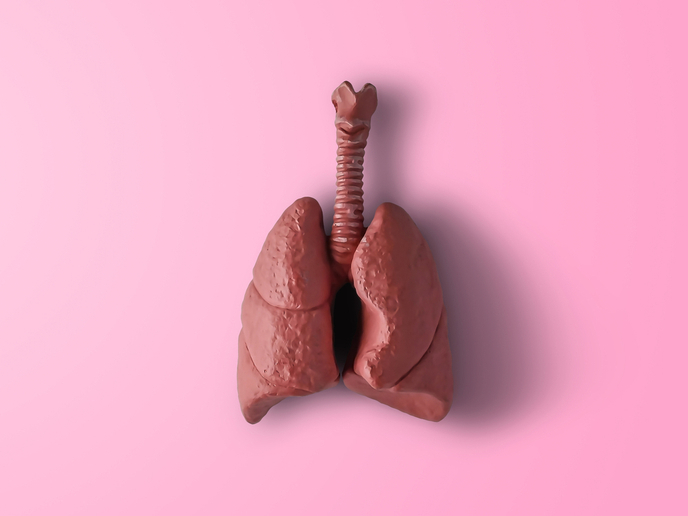Breathing life into tiny model lungs
Cultures(opens in new window) of living cells are an essential component in testing drugs and diagnostic devices. However, a layer of cells in a Petri dish often falls far short of replicating the conditions found in living organisms. The MECH-LoC project sought to address this by developing a more accurate model known as a lung-on-a-chip. “We want to make a system that has more physiological relevance than a Petri dish,” says project coordinator Lisa Muiznieks. “A Petri dish is static, there’s no movement. In tissues and cells there are dynamic forces at every level, such as breathing, walking and jumping; and on a small scale, the lungs expanding and contracting, the alveoli stretching and compressing with every breath.”
Mimicking the extracellular matrix
The flow of air through the lungs, and the pressure and shear stress of blood and extracellular fluid also provide mechanical forces on the cells, Muiznieks explains. Replicating these flows on a microfluidic chip will also allow researchers to administer cell nutrients and remove cell waste in a more efficient manner. “This lung-on-a-chip is not about replacing the whole organ, but mimicking a small subset of specific functions, in this case, the air-liquid interface of the alveoli surface,” observes Muiznieks. To create a realistic surface, cells were attached to a thin protein matrix. “All cells sit on an extracellular matrix, a network of fibrous proteins like collagen, fibronectin and elastin,” adds Muiznieks. “We can we mimic this environment for cells by making a membrane out of the same proteins.” Creating these membranes has been the focus of Muiznieks’ research career. Supported by the Marie Skłodowska-Curie Actions programme(opens in new window), Muiznieks moved to France to work with project host Elvesys(opens in new window), a microfluidics company, on building lung-on-a-chip models. After completing the fellowship in October 2020, she was hired as a full-time staff member at Elvesys. “We have prototypes, but they are not at a very high technology readiness level, more research is required before we get to that point,” explains Muiznieks. “We designed the casing, created the membrane, integrated it into the microfluidic chip, tested for validation by adding cells and having those cells attach, and were able to perfuse the channel.”
Less animal testing
The next step, she says, is to add further mechanical properties and stimuli, recreating the dynamic flow and stretching seen in living organisms, and test drugs using the system. The ultimate aim is to provide physiologically accurate model systems that can reduce the need for animal testing. “There are lots of ethical issues with using animals, and it costs a huge amount of money. Drug trials can look promising in an animal model, and maybe 90 % of the time in a human clinical trial they don’t work,” notes Muiznieks. “We need a better model of specific tissue function to improve the development of medicine.” She says that if organ-on-chip models are successful, a patient’s own cells could be added to the scaffold, paving the way for highly specific personalised medicine testing. Muiznieks aims to champion microfluidics to draw new researchers into the field and have them incorporate it into their own research. “Organ-on-chip is relatively new, it’s a promising field but there will have to be robust proofs of concept before it will be taken up by big pharma. Hopefully we can get there. We’re stronger working together than working alone.”







